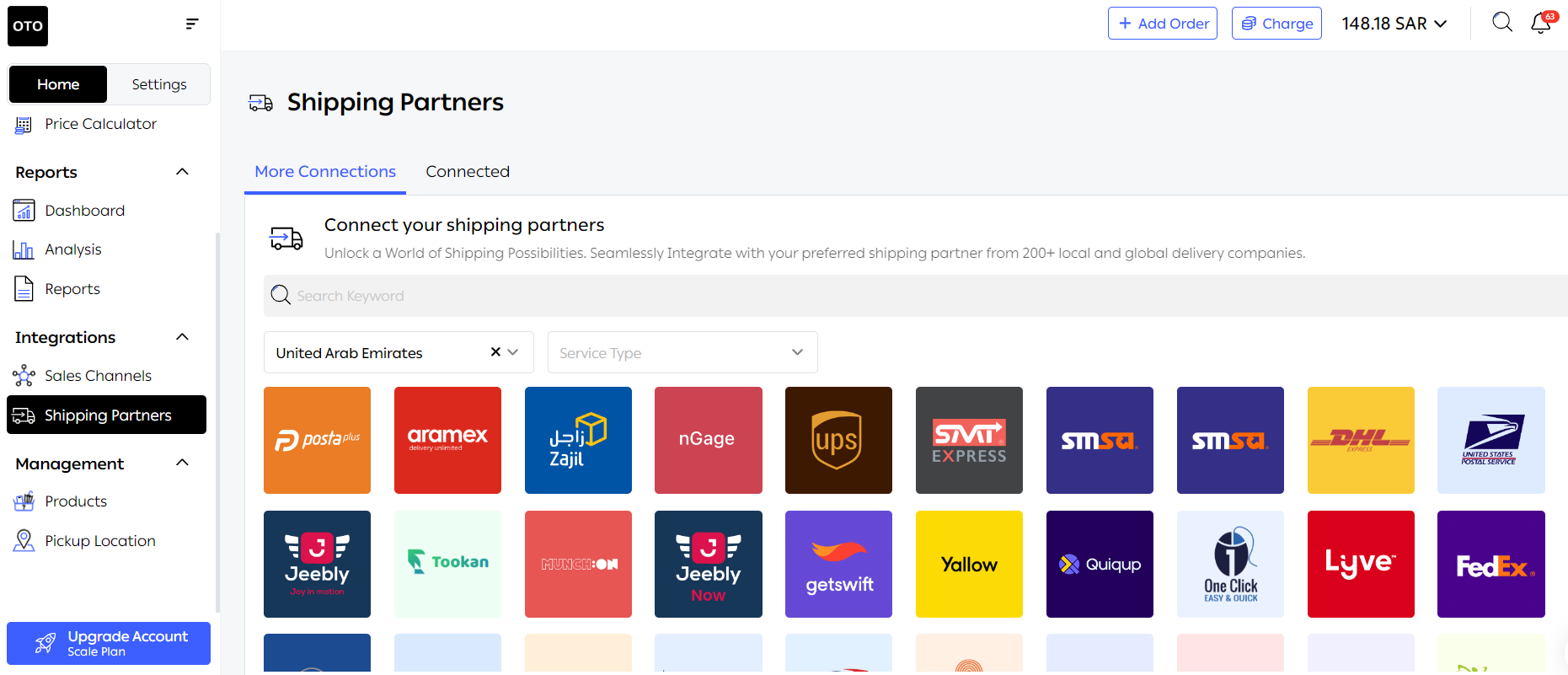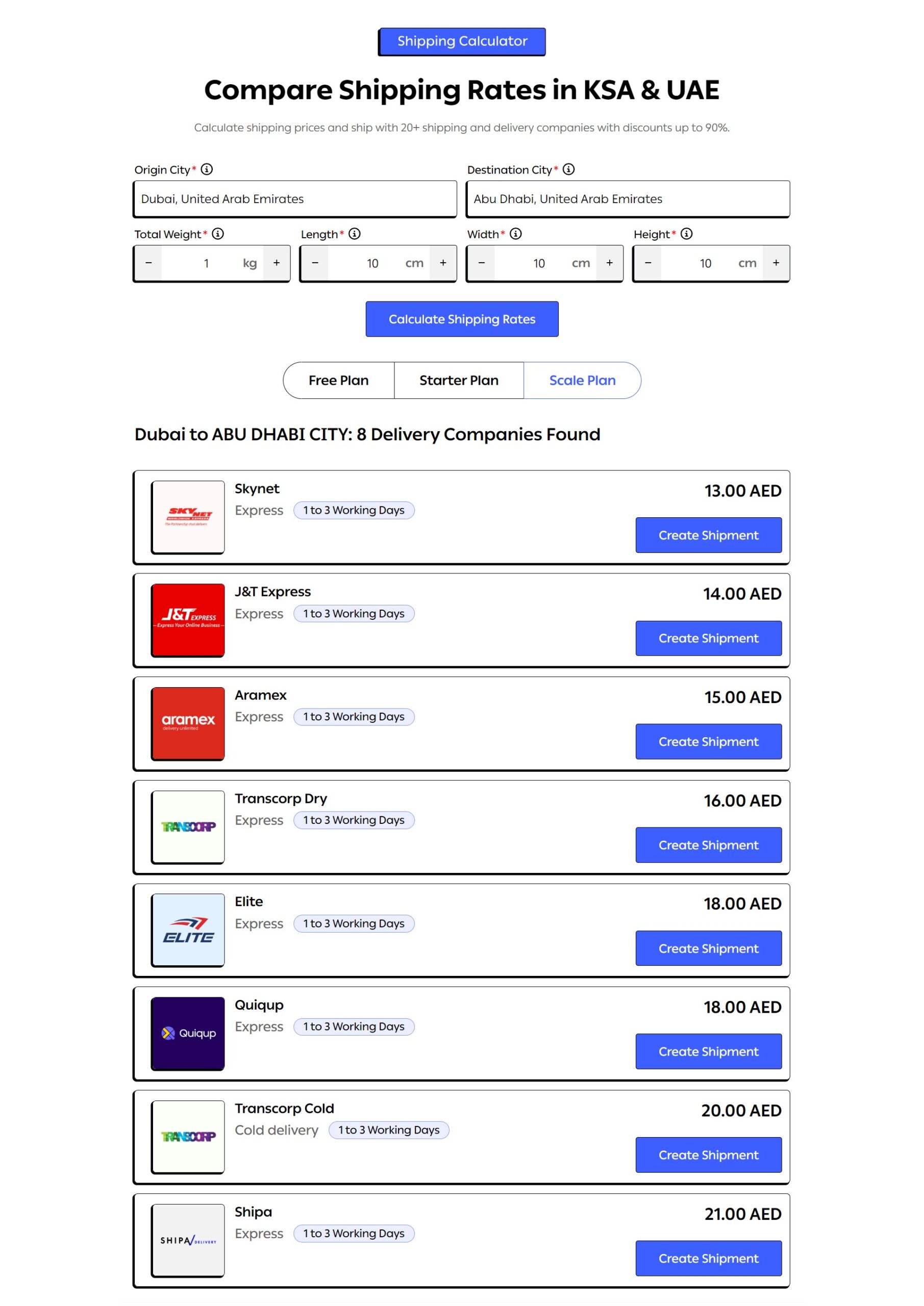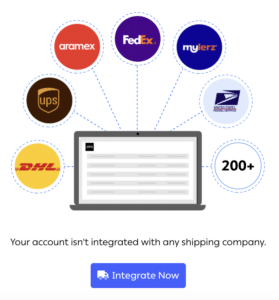An online business is a shipping business. Think about it—there is no viable way for e-commerce retailers to operate without shipping tens, hundreds, or even thousands of orders daily. So, in essence, shipping is one of the most important aspects of running a business, big or small.
Did you know?
Shipping costs can account for up to 10% of a small business’s expenses, according to research by Shopify. Imagine a small retailer that cut its shipping costs by 30%—that’s significant savings that can be redirected into growth opportunities!
The shipping process may seem subtle, but so much goes on behind the scenes. From product storage to packaging to delivery, cash collection to handling returns, shipping is indeed a subtle art. It’s the bridge that connects products to customers, often determining their satisfaction and loyalty.
This article will address cheapest shipping for small business and the most cost-effective ways for small businesses in the UAE to handle shipping. We will also include tips on reducing shipping costs and what to remember while selecting the most suitable shipping provider.
Importance of Shipping to Small Businesses
Shipping is more than just a logistical process; it’s a strategic tool that can directly impact a small business’s success. A proper shipping provider helps small businesses address high costs and complex logistics challenges.
Here’s why shipping is crucial for small businesses:
- Market Reach: It allows businesses to serve customers nationwide or even globally, expanding their potential customer base.
- Customer Satisfaction: Timely and reliable shipping is essential for building trust and customer loyalty.
- Efficiency: Efficient shipping processes can streamline operations and reduce costs.
- Revenue Generation: Shipping fees can contribute significantly to a business’s revenue, especially for online retailers.
- Competitive Advantage: Offering competitive shipping options, such as free shipping or express delivery, can set a business apart.
Factors to Consider When Choosing Shipping Options for Small Businesses
Dealing with the proper shipping solutions provider can make or break your operations as a small business. If your precious products get lost or damaged on the way to customers, you will be the one to blame. You’ll also have to compensate customers and go the extra mile to retain them.
Or imagine if your shipping provider fails to send you your collected cash on time. It will reverberate through your entire business operations.
There is no doubt that even the slightest mistake can cost you. To avoid issues, consider these factors when choosing between various shipping companies:
1. Shipping Costs
Shipping costs can vary significantly between carriers based on factors such as distance, weight, and type of service chosen. To evaluate and compare costs effectively, understand the following:
- Base Rates: Carriers have different base rates for shipping services. It’s essential to check whether the quoted price includes all fees, such as fuel surcharges, handling, or delivery area surcharges.
- Discounts and Contracts: Some carriers offer discounted rates for long-term contracts, frequent shipping, or bulk deliveries. Comparing these can lead to significant savings for high-volume shippers.
- Dynamic Pricing Models: Some companies offer dynamic pricing models that adjust rates based on supply and demand or seasonal factors. Understanding these models can help businesses budget more accurately.
- Accessorial Charges: Be sure to ask about extra fees for services like signature delivery, insurance, and weekend deliveries, as these can quickly add to the overall cost.
Tip: To compare costs effectively, calculate the total shipping expense per order, including hidden fees and discounts.
What OTO offers:
OTO offers a shipping calculator that enables you to directly compare the shipping rates of more than 10 shipping carriers in the UAE to choose the best one for your business and your budget.
You can use it directly from the Shipping Rates Calculator page without signing up, or you can create a free account and use OTO’s shipping gateway to get advanced comparison information and ship directly with the preferred shipping company with up to 90% off.
2. Delivery Speed
Balancing delivery speed with cost is crucial for customer satisfaction and business efficiency. While faster deliveries can boost customer satisfaction, they often come at a higher price. Here are some of the most common delivery types:
- Express vs. Standard Shipping: Express shipping typically delivers within 1-3 days but comes with a higher price tag. Standard shipping is slower but more affordable. Consider the urgency of the shipments and how much your customers are willing to pay for faster deliveries.
- Same-day/Next-day Delivery: Offering same-day or next-day delivery can be a competitive advantage for e-commerce businesses, but the costs are typically much higher. Weigh whether the benefit of faster delivery justifies the increased cost.
- Delivery Time Guarantees: Check if the carriers offer guaranteed delivery times or money-back guarantees if they miss deadlines. This can be critical if timely deliveries are essential for your business operations or customer experience.
- Cut-off Times: Some carriers have earlier cut-off times for shipments to be processed and shipped out the same day. Knowing these can help you plan your operations better and reduce the risk of delays.
Tip: Analyze your shipping needs and customer expectations to find the right balance between speed and cost.
3. Package Size and Weight
The dimensions and weight of the package are key factors that affect shipping costs. Most carriers use dimensional (DIM) weight pricing, where the box size can be more important than its actual weight. These are some of the terms you should know:
- Dimensional Weight: DIM weight pricing applies when a package is large but lightweight. Carriers use this to ensure they efficiently use space in their shipping vehicles. Compare how different carriers calculate DIM weight, as the formulas may vary.
- Weight Categories: Different carriers have set weight categories (e.g., under 1kg, 1-5kg, etc.) with corresponding rate tiers. If your packages consistently fall into a specific weight category, you may want to choose a carrier that offers competitive rates in that range.
- Oversize/Heavy Package Fees: Some carriers impose additional charges for packages that exceed specific size or weight limits. If you frequently ship large or heavy items, it’s essential to understand these thresholds and fees to avoid unexpected costs.
Tip: Use the right-sized packaging to avoid unnecessary dimensional weight fees and reduce shipping costs.
4. Shipping Zones and Destinations
Shipping zones and the distance between the origin and destination impact both cost and delivery times as follows:
- Domestic vs. International Shipping: Domestic shipments are generally cheaper and faster than international ones. However, international shipping can open up new markets. Be aware of customs fees, duties, and taxes for international shipments.
- Shipping Zones: Many carriers divide geographic areas into shipping zones, with costs increasing the further the destination zone is from the origin. A package shipped from Zone 1 to Zone 8 will be significantly more expensive than one sent within Zone 1. Understanding how your products move through these zones can help you strategize pricing.
- Regional or Specialized Carriers: Sometimes, using a regional carrier for local or national shipments can be more cost-effective than a large, global carrier. Regional carriers may offer better rates for certain zones or provide more flexible delivery options within specific areas.
- Cross-border Considerations: If your business ships internationally, you must consider customs clearance processes, import/export documentation, and potential border delays. Some carriers specialize in international shipping and can offer smoother customs processes and better tracking.
Tip: Optimize shipping by understanding your primary markets and selecting carriers that offer the best rates for those zones.
5. Reliability and Customer Service
Shipping reliability and customer service are essential for customer satisfaction and operational efficiency. As a business owner offering services yourself, you should also check the quality of service other businesses give you.
- On-time Delivery Rate: Evaluate the carrier’s track record for on-time deliveries. Reliable carriers can help minimize delays and enhance customer trust.
- Tracking Capabilities: Robust tracking features can reduce customer service inquiries and provide real-time updates to you and your customers. Some carriers offer more detailed tracking than others, so consider how important transparency is to your business.
- Customer Support: A carrier’s customer service quality is critical, especially if shipment issues arise. Look for carriers with responsive support, clear communication channels, and a reputation for resolving problems promptly.
- Claims and Insurance: Ensure the carrier has a straightforward claims process in case of lost or damaged goods. Some carriers are more proactive in compensating for such issues, while others have more complex procedures.
Tip: Opt for carriers with strong customer service and reliable delivery records to ensure smooth operations.
Tips to Ensure Cheapest Shipping for Small Businesses
Finding the right shipping solution provider for your business is the first step. Now, you want to ensure you’re getting the best available rates, even if it means you’ll have to negotiate your contract. Don’t fret, though. There are always ways to ship more for less. We give you some expert tips below:
-
Negotiate Rates with Carriers
It’s important to understand your shipping volume, destinations, and patterns to secure the best possible rates. This data will give you leverage when negotiating. Carriers often provide discounts to businesses that can guarantee consistent shipping volume, as it reduces their own operational uncertainty.
In addition, consider bundling your shipments. For example, instead of shipping individual packages, explore consolidating shipments for high-volume destinations. Carriers may be more willing to offer discounts when shipping to specific regions or handling larger loads.
You can also explore multi-carrier relationships to avoid being locked into one provider, creating healthy competition that may lead to better rates over time.
-
Use Shipping Software
Shipping gateways like OTO provide more than convenience—they open up a world of cost-saving opportunities. With such platforms, businesses can compare real-time rates from different carriers, ensuring you always choose the most cost-effective option for each shipment.
Additionally, these platforms often have partnerships with carriers, enabling businesses to access pre-negotiated, discounted rates that may not be available if you deal directly with the carriers.

For example, OTO’s discounted rates with certain carriers can save you up to 90% on shipping costs. Use our shipping calculator to see for yourself.
Furthermore, shipping gateways allow for process automation. Imagine printing shipping labels, updating customers with tracking information, and even automating returns—all with a few clicks. This not only streamlines operations but also reduces human error, saving your business time and money.
-
Consider Flat Rate Shipping
Flat-rate shipping is handy when your products vary in weight or size but your customers are spread across different zones. Carriers may offer flat-rate boxes at a fixed price regardless of the package’s weight or destination, provided the package fits within the box.
This can be especially beneficial for businesses that ship heavy items over long distances, where standard shipping costs could be prohibitive.
For example, a business that ships electronics may find flat-rate shipping advantageous. A laptop that might cost $25 to ship using regular rates could fit in a flat-rate box costing $10, offering significant savings.
Additionally, flat-rate shipping helps businesses create predictable shipping costs, which in turn allows for better financial planning and more consistent profit margins.
-
Offer Free Shipping with Minimum Spend
Free shipping is a powerful incentive for increasing order value, but it must be balanced with profitability. Offering free shipping with a minimum spend threshold encourages customers to add more to their cart to qualify, boosting the average order value.
This strategy works particularly well in e-commerce, where customers are often willing to spend more to avoid paying for shipping.
For example, if your average order value is $50 and your shipping cost is $7, you could offer free shipping for orders over $75. This way, customers who may have originally spent $50 might add an extra item or two to their cart to meet the threshold.
The additional revenue generated from these upsells offsets the shipping costs, leading to an overall increase in profitability. Moreover, promoting free shipping through email marketing or pop-ups on your website can serve as an additional nudge for customers.
-
Optimize Packaging
Optimizing your packaging isn’t just about cutting down on material costs—it can directly impact your shipping expenses. You can significantly reduce these charges by using the right-sized packaging and reducing unnecessary air in your boxes.
For example, a business that ships home decor items like picture frames could switch to custom-sized boxes instead of oversized ones.
This would reduce their dimensional weight fees and minimize the risk of items shifting during transit, decreasing the likelihood of returns due to damage.
Switching to eco-friendly, lighter materials can further cut costs while aligning with the growing consumer demand for sustainable packaging.
Cheapest Shipping Companies for Small Businesses in the UAE
This comparison provides a clear breakdown of the best shipping options for UAE shipping companies, focusing on pricing, service quality, and the most suitable carriers for small businesses.
| Category | DHL | FedEx | UPS | Aramex | Emirates Post | SkyNet |
| Cost-effectiveness | Higher prices due to premium service and fast international shipping | Competitive pricing for express services but slightly lower than DHL | Moderate pricing, cheaper than DHL for some routes, especially international | Affordable for regional deliveries, excellent value for the MENA region | Most affordable for local deliveries within UAE | Very competitive for local deliveries within UAE |
| Delivery Speed | Fast international shipping (1-3 days globally) | Quick international delivery, similar to DHL | Reliable and fast, especially for international shipments | Suitable for regional and domestic delivery, often 1-3 days locally | Slower for domestic deliveries (up to 5 days), minimal international reach | Fast and flexible within UAE, often next-day for local |
| Service Quality | High-quality service, global network, robust tracking, and customer service | Reliable service, global reach, trusted for time-sensitive deliveries | Strong customer service and secure shipping, especially for bulk shipments | Good regional coverage, known for COD and e-commerce services | Adequate for basic domestic service but lacks features like real-time tracking | Tech-driven, real-time tracking, excellent for local e-commerce |
| Local vs. International Focus | Strong international presence, limited focus on local or regional deliveries | International focus, less ideal for purely local deliveries | International solid network with good security, local focus weaker | Focus on the MENA region, best for businesses with regional needs | Primarily local, suitable for small companies shipping within the UAE | Suitable for e-commerce with local and worldwide deliveries |
| Top Features | Global network, real-time tracking, secure and fast delivery | Express shipping, reliable customer support, suitable for time-sensitive packages | Secure, reliable with good tracking and international bulk shipping | Affordable for regional deliveries, cash on delivery (COD) available | Most affordable for domestic shipments within UAE | Flexible delivery options, app-based tracking, and scheduling |
| Regional Strengths | Limited regional focus, better for international shipping | Strong for international deliveries, less ideal for local UAE | Known for international reliability but not the best for local shipping | Excellent for UAE and the broader MENA region, strong COD options | Best for domestic shipping within UAE, highly cost-effective | Strong for UAE, good for last-mile deliveries |
| Price vs. Service Balance | Premium pricing for premium service | Slightly cheaper than DHL for similar service quality | More cost-effective for businesses with regular shipments | Best value for regional shipments, affordable pricing | Lowest cost, but lower service quality and speed | Affordable for local delivery, excellent for startups and small businesses |
To further assist you, we’ve also compiled for you a more detailed breakdown of each company focusing on all the aspects that matter to small businesses*.
| Category | DHL | FedEx | UPS | Aramex | Emirates Post | SkyNet |
| Price (Domestic) | Higher cost for express, starting at approx. AED 75 | Slightly lower, starts around AED 60 | Comparable to DHL, it starts at AED 70 | Generally more affordable, starts around AED 40 | Low-cost, ideal for documents and small packages | Affordable for small e-commerce, starts around AED 20 |
| Price (International) | Higher for quick delivery | Lower rates for non-priority | Competitive, similar to FedEx | Middle range, better for regional deliveries | Lower than most, suitable for non-urgent deliveries | Affordable for MENA region, but higher internationally |
| Delivery Speed (Domestic) | 1-2 days with express options | 1-2 days standard, express same day | 1-3 days, depending on the service | 1-3 days for local and regional | 1-5 days standard, more for rural areas | 1-2 days within the UAE |
| Delivery Speed (International) | 2-5 days globally, express within 2 days | 2-5 days globally | 2-5 days, depending on country and service | 3-7 days regionally | 3-10 days for standard international | 3-7 days for regional deliveries |
| Service Coverage | Global leader, over 220 countries | Global, but best for the US and Asia | Global, strong in the US and Europe | Middle East and Africa focus, expanding globally | Focus on GCC and nearby countries | MENA region focus, expanding tech-driven services |
| Best For | Urgent global deliveries | Express and time-sensitive shipments | Large shipments, competitive pricing for bulk | Affordable local and regional shipments | Cost-effective domestic services | E-commerce and app-based deliveries |
| Additional Services | Customs management, end-to-end tracking | Same-day delivery, temperature-sensitive items | Freight options, reliable tracking | Multiple delivery attempts, return services | Budget-friendly for small parcels | App-based, real-time tracking |
| Strengths | Strong international presence, fast delivery | Known for speed and reliability | Wide variety of services, great for large packages | Affordable, suitable for regional e-commerce | Cheapest domestic rates, accessible locations | Easy e-commerce integration, cash on delivery |
| Weaknesses | High cost for express and international | Limited office locations in some regions | Extra fees for heavy shipments | Limited in rural areas, slower for international | Limited international coverage | Slower international deliveries |
*Last updated September 2024
OTO offers unbeatable savings. Enjoy up to 90% off on select companies, plus local shipping starting at just 13 AED. Our exclusive partnerships guarantee the lowest prices you’ll find anywhere.
How OTO, MENA’s #1 Shipping Gateway, Helps Small Businesses in Shipping
For the past five years, OTO has led logistics in the region and enhanced delivery for all kinds of businesses. We equip retailers with an all-in-one platform to handle everything shipping-related.
Using OTO, you can ship, manage, track, return, and analyze all your orders from one dashboard. You also get access to 250+ local and international carriers. The best part is that OTO’s gateway offers discounted shipping rates by forging partnerships with these carriers.
OTO offers nine integrated modules as follows:
-
- Order Management System: Simplifies the entire order lifecycle from processing to fulfillment.
- Warehouse Management System: Transforms your warehouse operations for maximum efficiency.
- Last Mile Management System: Simplifies last-mile delivery by offering powerful shipping integrations and automation features.
- Shipping Aggregators: Provides access to various carrier services based on each business’s needs.
- Delivery Management System: Manages the entire delivery process from dispatching to tracking.
- Return Management System: Streamlines the return process for a hassle-free customer experience.
- Customer Notification System: Uses multichannel notifications to keep customers informed and strengthen engagement.
- Business Analytics System: Empowers data-driven strategies through actionable insights.
- Workflow Automation System: Automates tasks with customizable rules to minimize errors and drive growth.
By signing up to use OTO, you can start shipping and saving immediately, while also benefitting from:
- Faster order fulfillment
- Seamless integration with various sales channels
- Lower operational costs
- Automated shipping and returns processes
- Driver performance management
- Increased customer trust
- Data-driven business growth
Case Study: Explore how Felt Eyewear managed to reduce high shipping costs with OTO.
Conclusion
Finding the cheapest shipping solutions for small businesses isn’t just about cutting costs—it’s about building efficiency, customer loyalty, and a competitive edge. Whether negotiating rates, optimizing packaging, or balancing delivery speed with affordability, innovative shipping strategies can elevate your business operations and enhance customer satisfaction.
Key Takeaways:
- Negotiate like a pro: Don’t settle for standard rates. By understanding your shipping volume and destinations, you can leverage better deals and significantly reduce costs.
- Embrace shipping technology: Platforms like OTO empower businesses by automating processes, comparing real-time rates, and offering access to pre-negotiated discounts that wouldn’t be available otherwise.
- Optimize every shipment: From right-sizing packaging to consolidating orders, small adjustments can lead to significant savings over time without compromising the quality of your deliveries.
By strategically evaluating its shipping options and leveraging the right tools, your small business can transform logistics into a growth driver—not just a cost center.
Don’t leave money on the table. Sign up for OTO today and experience the difference that optimized shipping can make for your business!








